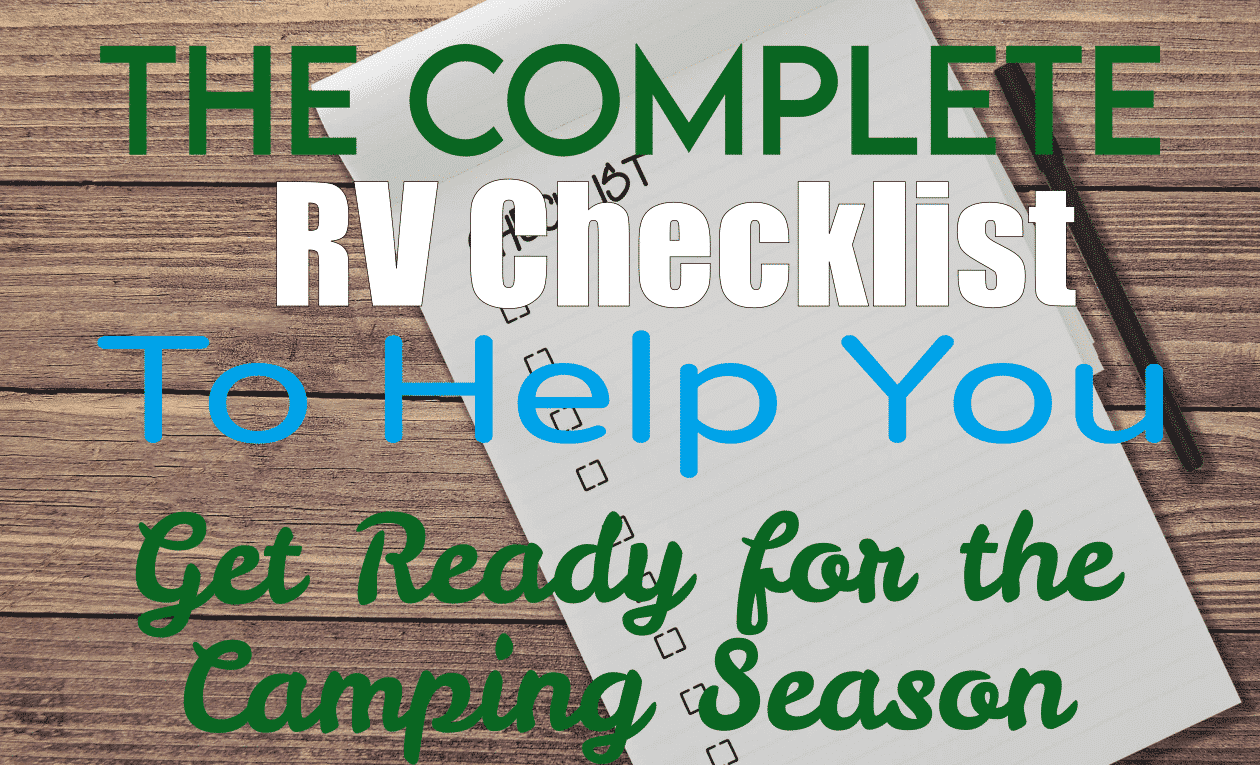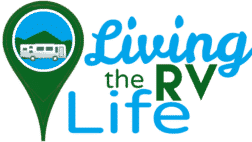
Owning an RV can be a lot of work, sometimes. Springtime might be one of those times. If you own an RV and have had it stored through the winter, and in particular, if you have had to winterize it to help it survive in colder temperatures, there is a procedure you should follow to ensure that it is ready to go for the summer season. This is particularly important if you’ve never owned an RV before, or if you perhaps have just forgotten what you are supposed to do.
This list is all-inclusive, and you may find that some things don’t apply to you. That’s fine! Just use the parts that are specific to your own RV.
Below are the top things you should look at when preparing your RV for use for the first time, after it’s been in storage and/or winterized.
Step 1: Remove storage covers and perform an exterior Inspection.
- Remove any storage cover(s) from RV. Set aside to clean later (if needed)
- Look for any signs of obvious damage
- Walk around and perform a thorough visual inspection. Look at every seam, joint, storage door or hatch and window.
- Check sealant and gasket conditions: Are there: Cracks? Peeling? Missing areas?
- Are there any noticeable bubbles in the sidewall or other signs of delamination?
- Are the windows foggy, or showing signs of condensation between panes, or otherwise discolored?
- Are there any cracks in the fiberglass, especially around the slides?
- For RVs clad in aluminum, are there any obvious signs of damage or discoloration?
- Inspect Wheels and Tires
- Is there signs of uneven or unusual wear?
- How is the tire pressure? Is it still set correctly? Tire pressure is indicated on the sidewall of the tire.
- What is the age of the tire? The common rule of thumb for changing your RV tires is anywhere between three and six years. If you are unsure ask your local tire store.
- Are there any obvious debris (such as screws, nails etc.) in the tire?
- Are there any signs of cracking on the sidewalls?
- Are there any bubbles, scuffs or other bruises to the sidewall?
- Inspect Batteries (both coach and chassis, if equipped)
- Use a tester to check voltage. What is their voltage?
- If they are lead acid batteries, is there enough water to cover the plates?
- Is there any corrosion on any of the terminals?
- Are the terminal connections tight?
- Is the box or tray where they sit secure, clean, and vented properly?
- Propane Tanks and Lines
- Are there signs of chewing on the rubber lines? Inspect all lines for cracks or splits. This is especially important on older RV’s.
- Check the propane level. Are your tanks in need of a refill?
- Does the tank gauge (if equipped) match the reading on the inside monitor panel?
- If portable propane tanks (IE not built in such as in a motorhome), what is the date stamped on the collar? Does the tank need to be recertified? (Required to be recertified at 10 years.) Learn how to read the date here (link opens as a PDF in a new tab).
- Is there rust on the tank?
- Does the valve open and close easily by hand?
- Inspect the power cord
- Does the cord or ends have damage including melting or charring?
- Is there corrosion on the plug end?
- Plug the RV into power and make sure all devices and receptacles work. ONLY DO THIS AFTER YOU’VE CONFIRMED THERE IS NO DAMAGE TO THE CORD, OR ENDS.
- Is the converter charging the battery with the RV plugged in?
- Inspect exterior lights.
- Once your batteries are checked and verified confirm exterior lights all function. Not all RVs will have all of these, so you only need to check the ones your RV has.
- Headlights
- Fog Lamps
- Turn Signals
- Brake Lights
- Clearance lights
- Reverse Lights
- Once your batteries are checked and verified confirm exterior lights all function. Not all RVs will have all of these, so you only need to check the ones your RV has.
- Other things to check – this list will depend on the type of RV you have:
- Inspect and repack or replace the wheel bearings on a 5th wheel or travel trailer as needed.
- Inspect and adjust trailer brakes if necessary.
- On motorized units, change oil and filters as necessary on the engine and generator per manufacturer recommendations.
- On motorized units, inspect and replace the air filter as necessary.
- On motorized units, inspect and replace fuel filter as necessary.
- Inspect and replace the wiper blades as necessary.
- It is time to inspect the roof. BE VERY CAREFUL WHEN CLIMBING TO AND WALKING ON THE ROOF
- Check all the sealants around all joints, seams looking for penetration on the roof.
- Inspect every item installed on the roof for damage, cracking or looseness.
- Inspect the membrane for any tears or holes.
- Does the roof need to be cleaned?
Step 2: Level your RV
If you didn’t do this when you parked your RV, and once you have completed the exterior inspection and are sure everything is functioning well, it is time to ensure your RV is level and extend your slide(s) if equipped.
- Inspect the Slide(s)
- Did they open smoothly?
- Is there any wall damage or blemishes?
- Inspect the slide wall seals for openings or peeling.
- Inspect the slide wall seals and sweeps to ensure they are still making good contact and are not UV damaged or torn.
- Inspect the slide gears and mechanisms if visible.
- Inspect the slide roof for tears or open sealants.
- Inspect the slide out toppers (if equipped)
- Did they roll out normally when the slide was extended?
- Did they retract to their original position properly when the slide is retracted?
- Perform a visual inspection for fraying at the ends or other separations along it’s length, or holes anywhere in the slide.
Step 3: Interior RV Inspection
Once you have completed your exterior inspection and noted any issues that need to be resolved it is time to move onto the interior inspection.
- Interior Inspection
- Inspect the interior for any signs of water intrusion or moisture damage.
- Inspect the interior for any signs of rodent or other pests.
- Inspect and clean all the appliances to be sure they operate. Note: if you have an absorption refrigerator. Let it run for at least 12 hours to determine if it is cooling properly.
- Test all the GFCI outlets to make sure they trip when the test button is pressed.
- Test all smoke detectors, carbon monoxide detectors and LP detectors. Replace batteries in these devices per the manufacturer recommendations and replace the detectors at their recommended replacement intervals REGARDLESS OF WHETHER THEY WORK AND ESPECIALLY IF THEY DO NOT.
- Check the fire extinguisher for charge and date. If it is 10 years or older, consider replacing it according to manufacturer recommendations. When inspecting the extinguisher be sure to turn the bottle upside down several times to move the contents around inside.
- Check that all interior lights and switches operate.
- Check air conditioner(s)
- Remove covers on inside to inspect filters. Are they clean?
- Check function of thermostat – does it move easily.
- Turn on AC units and move the thermostat to lower temperature. Does the AC unit start? Is there cold air coming out of it?
- De-winterize the water system.
- Flush the water heater and sanitize the water system and tank. Click here to learn how to do this if you have never done it (link opens in new tab)
- Fill the water tank full of fresh water.
- Pressurize the water system using the water pump and inspect all visible lines for leaks.
- Hook up city water service and turn on water to verify there are no leaks in this system.
- Inspect function of toilet flush mechanism. Is it working? Is water flowing into the toilet bowl?
- Inspect function of faucets, shower heads etc. to ensure they work and water is flowing out of them.
- Operate all the LP appliances including the furnace. Before lighting the appliances, make sure that there are no pests in the burners of the refrigerator, water heater or furnace. This can be checked via the access panels on the outside of the RV.
- Inspect beds, cushions, seats, curtains, blinds etc. for signs of chewing by rodents or other pests.
- Inspect and test any interior electronic items, such as radios, CD or DVD players, TVs, Satellite systems, etc. Check and change batteries in remotes as needed.
Once you have completed this list you are ready to go! Now is the time to stock the fridge and cupboards, make the beds and get on your way!
To make this list easier, please download the PDF copy of our list. Feel free to print, save and share with your friends that are also RV owners.

